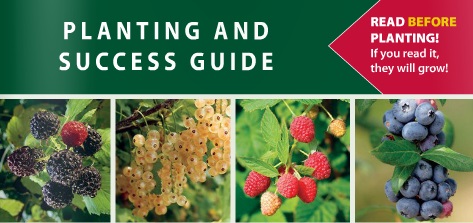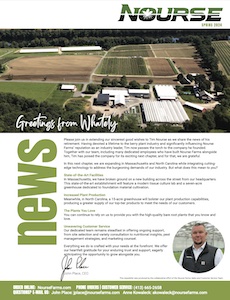1. TIMELY RENOVATION OF STRAWBERRIES
Renovation of June Bearing strawberry plants is a critical component to growing strawberries and must be performed in a timely manner to ensure success. Renovating your field provides an opportunity to control weeds, apply fertilizer, and thin your rows. There are factors that may delay renovation, such as a heat or water stressed field, but, if possible, renovation should be performed immediately after harvest. If renovation is not performed by the second week in August, you should skip mowing but fertilize and narrow your rows regardless. If you think you may have missed the renovation window, give us a call to discuss your options.
2. BERRY PRICING DECISIONS
Inflation has soared to its highest level in four decades, with the Consumer Price Index jumping over 7 percent for the year ending in December. We know prices are increasing on just about everything. There is no question growers will need to get more money for their berries. Marketing and pricing of fruit is as important as selecting the best varieties and using the best management practices. The question is how much should growers raise their pricing – 5%, 10%, 15% or more?
Considerations for pricing:
Production budgets. Now is the time to finetune production budgets for this season. Take a close look at budget increases, particularly in the following areas, where we anticipate the largest:
• Fuel & Transportation
• Labor (Seasonal and Full time)
• Packaging (Containers)
• Spray materials
• Fertilizer
Most state cooperative extension departments have excellent budgeting tools on their website.
Farm location. Farms located in more urban or metro areas, where the costs of living and farming are greater, may need a higher price increase.
Production type. Day neutral strawberries, organic, and berries produced in controlled environments (high tunnels) cost more to produce. As the fruit is often produced outside typical ripening seasons or conventional farming, they can garner a higher price increase.
Farm services & entertainment. Providing containers, clean bathroom facilities and farm entertainment (hayrides, petting zoos, etc.) are all incentives for consumers to pay more for your product.
Expanded marketing of berry health benefits. Marketing messages all growers should be promoting are the health benefits of berries as well as “Buying Local.” Scientists have found berries to have some of the highest antioxidant levels of any fresh fruits (measured as ORAC), with kale and spinach being the only vegetables with ORAC values as high as fresh, delicious local berries. Social media, including META (Facebook), Instagram and Twitter can assist in focusing on the high value of local berries.
3. FROST PROTECTION REMINDER
Growers have reported an increased need for frost protection over the last several years and we expect this trend to continue. Strawberry plants grow close to the soil and blossom earlier than many other crops, putting them at risk for spring frost and freeze damage. Frost protection is in an important component to a successful strawberry planting, as frost and freeze can cause significant injury to strawberry plants, during open blossom, but also to unopened buds if it is cold enough. There are several options available for frost protection, including overhead watering, row covers, and wind machines/return stack heaters. We believe overhead watering is the most dependable option. Below is a chart of critical temperatures for plant tissue, which are a degree or two lower than critical air temperatures. Because of the variables involved, we recommend beginning frost protection when temperatures are expected to drop below 32.

4. PLASTICULTURE PLANTING DATES
As more growers consider switching to plasticulture production for bare root strawberries, it is important to note that planting dates for plastic should be later in the season than for matted row production. Planting too early on plastic leads to the development of too many branch crowns which can signifi cantly reduce berry size and yield. Further, there is an increased development of runners which will require an extra round of removal. Growers should be planting bare root strawberries on plastic between mid-June to mid-July depending on your region and aim for 3-4 branch crowns at the end of the season. Strawberry plugs on plastic should be planted approx. 30 days after bare root, or between early-August to mid-September, depending on location.
5. AN ALTERNATIVE TO SURFLAN HERBICIDE
We learned this past year that SURFLAN was no longer going to be available. Surflan has been a safe herbicide for brambles. A labeled alternative for SURFLAN is TRELLIS SC, manufactured by Dow AgroSciences (now known as Corteva). Growers will need to try Trellis SC to gain experience. As it has more activity than Surflan, I would
suggest you begin at the lower rate when applying it to sandy soils.
• Trellis will be most effective if watered in with a half inch of rain or irrigation.
• Labeled rates – 16 to 31 fl. ounces/acre.
• Apply Trellis when the soil is settled around newly planted plants.
• Do not apply within 60 days of harvest.
• Recommended not to apply through the irrigation system.
There is a supplemental label for Trellis SC that each grower should obtain for their records. Each grower should check to be sure Trellis is registered for your state. Currently Trellis appears to be labeled for all states except New York. The chemistry, isoxaban, is not registered for New York.



